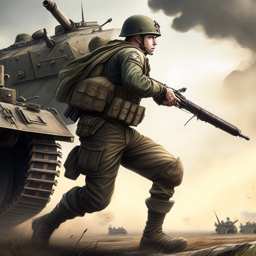From Air Force (Howard Hawks, 1943) to Inglourious Basterds (Quentin Tarantino, 2009), the cinema has taken on the cultural task of visualizing World War II. Increasingly, however, this task has also been taken up by new media—video games, in particular—resulting in new perspectives on the social and political meanings of the war in contemporary America. World War II video games—which are some of the most popular games featuring military combat—participate in the cultural nostalgia for the war to which recent films like Saving Private Ryan (Steven Spielberg, 1998) and Pearl Harbor (Michael Bay, 2001) contributed. By the 1990s, the World War II video game had established itself as a resilient formula and an important way that the cultural memory of the war was activated for a growing segment of the population. In sharing some of these nostalgic ideologies of the war, contemporary World War II video games draw explicitly from cinema. In this essay, I explore how contemporary video games adapt the World War II combat film genre for their own cultural work. I contend that World War II video games reflect contemporary fantasies of the war as evidence for the assured triumph of the West (and particularly the United States). The victory of the Allied powers is literally played over and over again—both in various games, which recycle the same scenarios, as well as within gameplay, in which levels and campaigns are repeated over and over again until they are beaten. This repetition reflects not only an obsession with certain aspects of the war, but an emphasis on manual activity—particularly the simulation of shooting. Thus, World War II video games combine the moral and narrative associations of the war with the physical activity of shooting, creating a sense of mastery and control. However, I will make the case that this simulation of history actually better reflects contemporary warfare, providing a representation of the present disguised as the past.
“The World War II Video Game, Adaptation, and Postmodern History,” Literature/Film Quarterly 38.3 (July 2010): 183–193.
